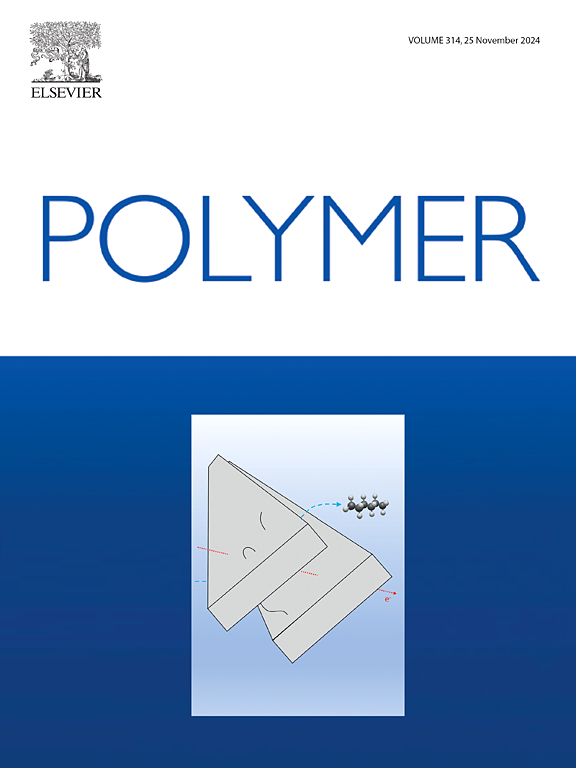Effects of dopant solution solvent on the stability of doped P3HT films
IF 4.1
2区 化学
Q2 POLYMER SCIENCE
引用次数: 0
Abstract
Understanding the factors affecting stability is crucial for achieving commercial success with doped conjugated polymers (CPs). In this work, we sequentially doped poly(3-hexylthiophene) (P3HT) films with 2,3,5,6-tetrafluoro-7,7,8,8-tetracyanoquinodimethane (F4TCNQ) from chlorobenzene/acetonitrile (CB/AN) solvent blends and stored the doped P3HT films under inert conditions at room temperature. The sequential doping of the P3HT film was accompanied by solution doping when CB was used to prepare the F4TCNQ solution. By combining UV–visible–near infrared (UV–vis–NIR) spectroscopy, Fourier transform infrared (FTIR) spectroscopy, and grazing-incidence wide-angle X-ray diffraction (GIXRD) measurements, we found that with prolonged storage time, the microstructures of doped P3HT produced by sequential doping could retain crystalline structures; however, the crystalline aggregates produced by solution doping would recover back to amorphous chains. The diffidence between the microstructures leads to the conductivity σ, the carrier density n and mobility μ of the P3HT film doped with F4TCNQ from CB/AN blend decreased faster than that doped from pure AN. Two doping mechanisms, namely, integer charge transfer (ICT) and charge transfer complexes (CTCs), occurred in each freshly doped P3HT film. The order of the ICT phase influenced its stability, regardless of its formation from solution doping or sequential doping. The lower the order of the ICT phase is, the better its stability. Both the ICT and CTC phases were unstable at room temperature, yet no interconversion between them was observed.


求助全文
约1分钟内获得全文
求助全文
来源期刊

Polymer
化学-高分子科学
CiteScore
7.90
自引率
8.70%
发文量
959
审稿时长
32 days
期刊介绍:
Polymer is an interdisciplinary journal dedicated to publishing innovative and significant advances in Polymer Physics, Chemistry and Technology. We welcome submissions on polymer hybrids, nanocomposites, characterisation and self-assembly. Polymer also publishes work on the technological application of polymers in energy and optoelectronics.
The main scope is covered but not limited to the following core areas:
Polymer Materials
Nanocomposites and hybrid nanomaterials
Polymer blends, films, fibres, networks and porous materials
Physical Characterization
Characterisation, modelling and simulation* of molecular and materials properties in bulk, solution, and thin films
Polymer Engineering
Advanced multiscale processing methods
Polymer Synthesis, Modification and Self-assembly
Including designer polymer architectures, mechanisms and kinetics, and supramolecular polymerization
Technological Applications
Polymers for energy generation and storage
Polymer membranes for separation technology
Polymers for opto- and microelectronics.
 求助内容:
求助内容: 应助结果提醒方式:
应助结果提醒方式:


